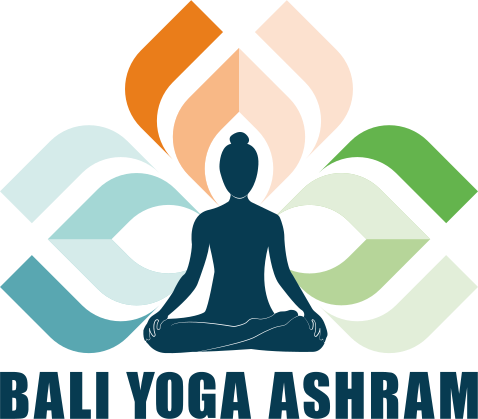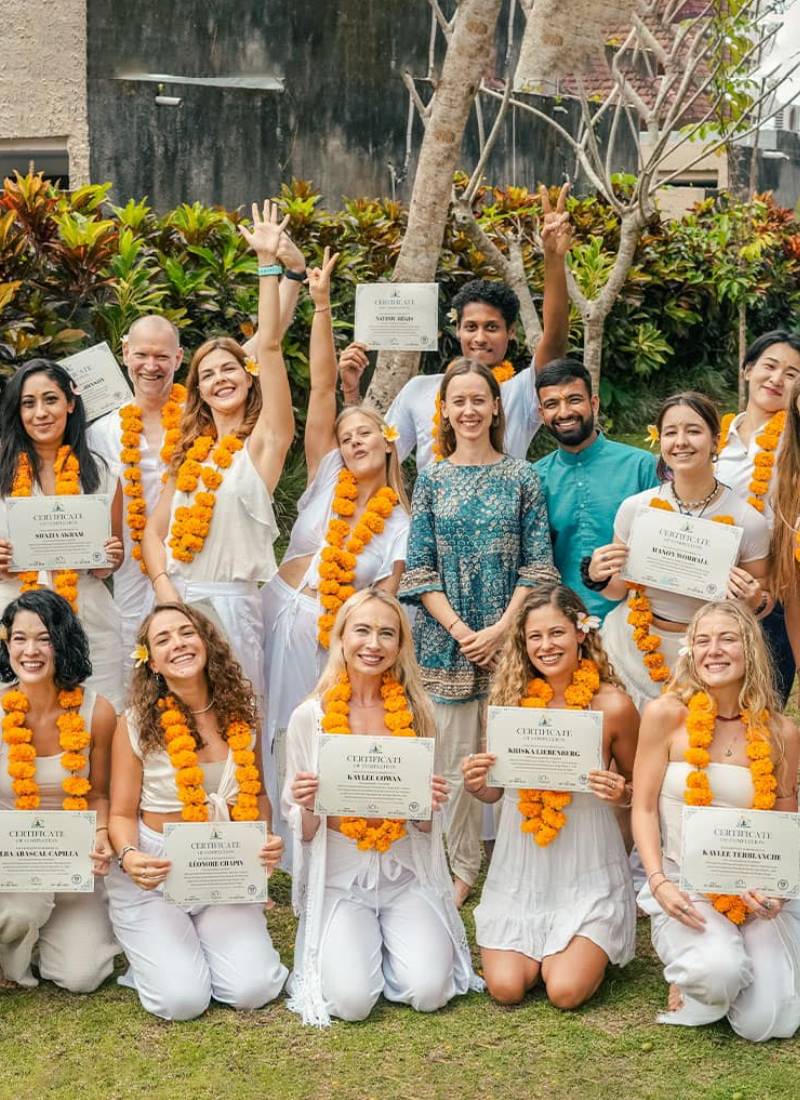
Namastey Yogis, so you are here to learn more about chakrasana, that’s great. Out of many yoga postures this is one of the most fascinating back bending posture and it’s also a strenuous one. At Bali Yoga Ashram, we have guided and trained so many aspiring yogi’s to do this posture. We are trying to do the same with this blog, so we hope you are ready to learn about all the do’s and don’ts of chakrasana.
What is Chakrasana?
The name of this asana is quite self explanatory. The word chakra means wheel in english and asana means posture. Hence, the name of the asana is wheel pose in english. It is essentially considered as back bending asana and requires a flexible spine. However, it will be a mistake to think that this yoga asana requires just flexibility, it is much more than that, keep reading.
What are the benefits of doing Chakrasana?
Chakrasana is performed and practiced by many yogis to strengthen the legs and spine. It is also beneficial to the digestive, nervous, cardiovascular, respiratory and glandular systems. It helps balance the hormonal secretions.
Before you attempt the asana?
- Women should not perform this asana during pregnancy.
- Anyone with back injury or lower back pain should avoid performing this arduous posture.
- People who have high or low blood pressure, should avoid it as breathing becomes heavy when the upper chest gets stretched.
- People who are suffering from migraine should avoid it as the head falls towards gravity and may cause headaches.
- People who have gastrointestinal issues at the moment may want to avoid doing chakrasana.
- If you have any cardiovascular problems, this might not be for you.
- If you are facing any spinal problems, you might want to avoid this posture.
- If you are a patient of hernia, there are many other simple postures to choose from.
How to Prepare for Chakrasana?
This back bending posture not only requires the flexibility of spine but it demands the cooperation of other body parts as well. Such as the mobility of shoulders, awareness of hip, and strength of upper back to pull the sternum up but do not worry, these preparatory asanas will help you reach the final posture.
Here are some asanas to begin your practice for chakrasana
For Shoulder Joint Mobility
Exercise 1 – Raising your arms up and making circles – clockwise and anticlockwise.
Exercise 2 – Lift right arm up and left arm stays down, push the palms in opposite directions to stretch the armpit region.
Exercise 3 – Perform the puppy pose with arms extended in front, keeping the hip over knees and try to your chest on the floor.
For Upper Back Strength
Exercise 1 – Interlace your fingers behind your back, stretch your shoulder back and lift your ribcage up.
Exercise 2- Come in Ashwasanchalan asana( Horse Riding Pose), keep your hand to the side while lifting your chest up and try to touch your hands down.
Exercise 3 – Wall support stretch: Stay in Ashwasanchalan asana( Horse Riding Pose) while keeping the back foot rested on the wall, raise your arms and place your palms on the wall. Keep lifting your chest while pressing your hip down for maximum shoulder and chest opening.
For Spine Mobility & Awareness
Exercise 1 – Cat and Cow, ( Marjari Asana): Come to the table top psoture, now inhale, pull your head up and chest goes down.
Exercise 2 – Vyaghrasana (Tiger Pose): Come back in Marjari Asana, arch the downwards, straighten the right leg, stretch it up and back, do the same with other leg.
Exercise 3 – Shashank Bhujangasana (Striking Cobra Pose): Lie on your belly, keep your hand next to your chest, press your palm and lift your head and chest up. Keep the hips and top of the foot pressed on the mat.
How to Do Chakrasana?
Technique for Beginners yoga practitioner
Step 1: Lie flat on your back on the mat/floor.
Step 2: Raise and bend the elbows over head and place the palms under the shoulders. Note: (The distance between the palms should not be wider than the shoulders and fingers should point towards the feet.)
Step 3: Bend and raise the knees, then bring the feet close until they touch the hips. Step 4: Exhale, raise the trunk and rest the crown of the head on the floor.
Step 5: Now exhale, lift the trunk and head and arch the back so that its weight is taken on the palms and the soles. Step 6: Stretch the arms from the shoulders until the elbows are straightened, at the same time pulling the thigh muscles up.
Step 7: To get a better stretch, exhale and pull the thigh muscles still higher by lifting the heels off the floor. Extend the chest, stretch up the sacral region of the spine until the abdomen is taut as a drum and then lower the heels to the floor, maintaining the stretch of the spine.
Step 8: Remain in this position from half a minute to a minute, with normal breathing. Step 9: With an exhalation, lower the body to the floor by bending the knees and elbows.
Technique for Intermediate yoga practitioner
Step 1: Stand erect with the feet one foot apart and the palms on the hips.
Step 2: Push the pelvic region slightly forward, exhale and curve the trunk back so that the weight of the body is felt on the thighs and the toes.
Step 3: Raise the arms above the head and drop the hands on to the floor. Immediately try to straighten the arms at the elbows and rest the palms on the floor. If the elbows are not stretched immediately as the palms touch the floor, one is likely to bang the head.
Step 4: After securing the above position stretch the legs and arms straight.
Step 5: It is helpful to use a friend or a wall to learn this pose. Stand about three feet from a wall with your back to it. Curve the back and move the head towards the wall. Raise the arms over the head and rest the palms on the wall. Push the pelvis forward so that the body weight is felt on the thighs and move the palms down the wall until you touch the floor. Use the wall for coming up in a similar manner. After mastering this, only use the wall until you are half-way up. Then learn to do the asana in the middle of the room.
A BONUS TECHNIQUE AND UPRGRADED ASANA FOR ADVANCE YOGA PRACTITIONER
Viparita Chakrasana in Urdhva Dhanurasana. Step 1: Stand erect. Bend forward and place the palms on the floor. Exhale and swing both legs up as though you were doing the full arm balance, bend the knees, arch the back and drop the legs behind the head. Step 2: While the legs are coming down beyond and behind the head, contract the hips, extend the back up, stretch the ribs and abdomen and straighten the arms at the elbows. Unless you do this, you will sit on the floor with a bump. 3· When all this has been mastered, learn the reverse swinging movements, the legs up and back in a reverse somersault movement. Doing this reverse somersault into the forward bending position is called Viparita Chakrasana, the reversed wheel pose.
Note: These advanced practices are advised to learn with the aid of a competent teacher.
Important Links:
Yoga Teacher Training Bali | 200 Hour Yoga Teacher Training Bali | 300 Hour Yoga Teacher Training Bali | Yoga School in Bali
Frequently Asked Questions About Chakrasana
What is the breathing pattern while doing the asana?
Ans-Inhale in the starting position. Retain the breath inside while raising the body. Retain the breath inside or breathe normally in the final position. Exhale while lowering the body.
What is the duration to hold the posture?
Ans- Hold for as long as is comfortable. Practice Upto 3 rounds.
Where to keep the awareness while doing this asana?
Ans-Physical awareness should be on relaxing the spine in the final position and on the chest and abdomen.
What are the counter asanas for chakrasana?
Ans-It may be followed with forward bending asanas such as halasana (Plough Pose), paschimottanasana (Back Stretching Pose) and sarvangasana (Shoulder Stand Pose)

